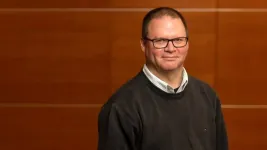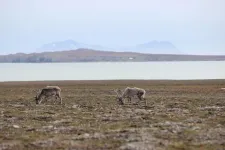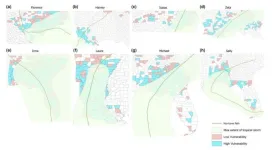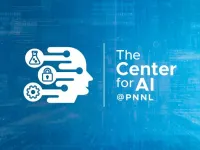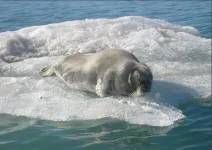(Press-News.org) Thursday Dec. 14, 2023, Toronto – Does thinking about faith make religious people more likely to take leaps? A new study lead by York University’s Faculty of Health says yes, finding that participants were more likely to take risks when thinking about God as a benevolent protector.
“While the theoretical link between a belief in God and risk taking has been around for a while, the methods previous studies employed to test this weren’t the strongest, based on current best practices,” says lead author Cindel White, an assistant professor in the Department of Psychology. “Our carefully designed study confirmed that those who believe God will protect them from negative consequences will feel more confident in pursuing potentially dangerous or uncertain activities because of a perceived safety net.”
The study, Do reminders of God increase willingness to take risks? – published Monday in the Journal of Experimental Social Psychology, and written by White and collaborators from The University of British Columbia, Chloe Dean and Kristin Laurin – looked specifically at Christian Americans, who are known to believe in a God who protects them from harm. White also focused specifically on what she refers to as “morally neutral” risks.
“We know from previous research that religious people might be less inclined to take risks that have immoral connotations, such as drug use, and we also know that people might feel more encouraged by God to take on risks that are morally positive, like helping a person in need,” White explains.
Instead, the researchers focused on scenarios involving recreational risks like mountain climbing, and social and career-based risks, like moving to a new place to pursue a new job opportunity, finding a reliable link.
White says the findings don’t tell us whether religious people are more likely to pursue risks than non-religious ones, but they may point to a sense of safety a belief in God provides.
“These results support the argument that as Christians go through their daily life, these beliefs about God can be used to make them feel better if they choose to pursue a risk. It does make sense that this relationship between beliefs about God and risky behaviour is part of a broader set of religious beliefs that help people cope with uncertainty and fear and stressors in daily life and help them see their lives in a more positive way and therefore, make them more likely to pursue opportunities that they might otherwise avoid.”
-30-
York University is a modern, multi-campus, urban university located in Toronto, Ontario. Backed by a diverse group of students, faculty, staff, alumni and partners, we bring a uniquely global perspective to help solve societal challenges, drive positive change, and prepare our students for success. York's fully bilingual Glendon Campus is home to Southern Ontario's Centre of Excellence for French Language and Bilingual Postsecondary Education. York’s campuses in Costa Rica and India offer students exceptional transnational learning opportunities and innovative programs. Together, we can make things right for our communities, our planet, and our future.
Media Contacts: Emina Gamulin, York University Media Relations and External Communications, 437-217-6362, egamulin@yorku.ca
END
Dr. Aditya Bardia, a renowned breast medical oncologist and physician scientist who specializes in developing novel targeted and personalized therapies, has joined the David Geffen School of Medicine at UCLA and the UCLA Health Jonsson Comprehensive Cancer Center where he will assume several leadership roles across the institution. These will include the directorship of the Breast Cancer Clinical and Research Programs and the position of assistant chief of Translational Research in the division of hematology/oncology, department of medicine. He will also be named director of Translational Research Integration and co-director ...
Research published today in Nature sheds light on a small part of the so-called “dark genome” — the 98 per cent of the human genome whose biological function is largely not known.
In the study, an international multidisciplinary team reported the first high-resolution images and structural details of a genetic element known as LINE-1 (video here), which inserts itself into the human genome and is implicated in diseases such as cancer, autoimmune disorders and neurodegeneration, and even aging. The work provides a target for ...
Quantum information scientists are always on the hunt for winning combinations of materials, materials that can be manipulated at the molecular level to reliably store and transmit information.
Following a recent proof-of-principle demonstration, researchers are adding a new combination of compounds to the quantum materials roster.
In a study reported in ACS Photonics, researchers combined two nanosized structures — one made of diamond and one of lithium niobate — onto a single chip. They then sent light from the diamond ...
In the frigid seas halfway between mainland Norway and the North Pole, two types of animals browse the palatable vegetation of a high-tundra archipelago, munching on thick moss, cropped grasses and low-lying shrubs. New research from a group led by Matteo Petit Bon from the Quinney College of Natural Resources is working to untangle the ecosystem impacts that two major players — geese and reindeer — have on a changing and vulnerable Arctic system.
Reindeer have been year-round residents on the islands of Svalbard for thousands of years, but at one point were almost completely gone. Svalbard ...
Hurricanes and other extreme weather events often affect disadvantaged communities more severely, and extended power outages are some of the most harmful effects. Concerns over the intensification of hurricanes has led to new environmental justice policies that aim to mitigate the unequal impacts of major storms. Now, policy experts and engineers are directing their attention toward illuminating the causes.
Researchers at the Georgia Institute of Technology sought to investigate whether socioeconomically vulnerable households experienced longer power outage durations after extreme weather events. The team analyzed data from the top eight major Atlantic hurricanes between 2017 ...
RICHLAND, Wash.—The Department of Energy’s Pacific Northwest National Laboratory has created the Center for AI @PNNL to coordinate the pioneering research of hundreds of scientists working on a range of projects focused on science, security and energy resilience.
Researchers at PNNL were among the first to dive into artificial intelligence decades ago. But AI has surged in the past year with the ready availability of generative AI, which allows almost anyone to produce sophisticated—though sometimes errant—text and images with just a small amount of data. At the same time, AI is a vital tool for ...
USD$200,000 awarded to tackle today’s pressing consumer technology demands
Utilizing smart optical sensors for IoT
Providing more realistic virtual and augmented realities
WASHINGTON – The Optica Foundation today released more detailed information on information technology research funded by the 2023 Optica Foundation Challenge. Researchers Zaijun Chen, University of Southern California, USA, and Alejandro Velez-Zea, Universidad de Antioquia, Colombia, both proposed novel approaches to addressing the flow of data and information in consumer-centric technologies.
“The ...
Certain facial features—like downturned lips and a heavy brow—are known to make someone appear untrustworthy to others, even though these do not indicate a person’s actual character. Such facial biases influence our everyday social interactions as well as high-stakes decisions, including who we hire, or elect to political office.
But a new study by Columbia researchers shows that the effects of these judgments can be mitigated. The study outlines the results of four experiments that the authors conducted with 1,400 volunteers. Through those experiments, the researchers found that when real-world defendants have facial features that appear untrustworthy, they are more likely ...
Photolithography involves manipulating light to precisely etch features onto a surface, and is commonly used to fabricate computer chips and optical devices like lenses. But tiny deviations during the manufacturing process often cause these devices to fall short of their designers’ intentions.
To help close this design-to-manufacturing gap, researchers from MIT and the Chinese University of Hong Kong used machine learning to build a digital simulator that mimics a specific photolithography manufacturing process. Their technique utilizes real data gathered from the photolithography system, so it can more ...
Arctic seals have evolved many adaptations to cope with their frosty environment—one that you might not immediately think of is the bones in their nasal cavity. Arctic seals have more convoluted nasal passages than seal species that live in milder environments, and researchers report December 14 in the Biophysical Journal that these structures help the seals more efficiently retain heat and moisture as they breathe in and out.
“Thanks to this elaborate structure in their nasal cavities, Arctic seals lose less heat through nasal heat exchange than subtropical seals when both are exposed to the same ...
